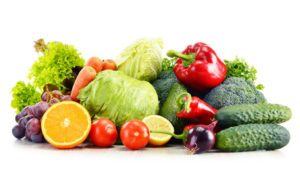 A recent large study found that getting high levels of vitamin D from foods, but not supplements, is linked to a lower rate of a common skin cancer (squamous cell carcinoma) years later. Once again: the beneficial health effect is associated with eating real foods, but not supplements.
A recent large study found that getting high levels of vitamin D from foods, but not supplements, is linked to a lower rate of a common skin cancer (squamous cell carcinoma) years later. Once again: the beneficial health effect is associated with eating real foods, but not supplements.
Researchers found an inverse relationship with vitamin A intake and squamous cell carcinoma - those that had the highest dietary intake of vitamin A had a 17 % reduction of the skin cancer during the next 26 years. The inverse associations were highest among those with moles and those who had sunburns during childhood or adolescence.
The high intake group had the vitamin A amount equivalent to one medium baked sweet potato or 2 large carrots each day. Most of their intake came from fruitsand vegetables. Vitamin A (retinoids) is important in keeping skin cells healthy, and retinoids are considered cancer protective (or anticancer) for several cancers.
What foods are high in vitamin A? Plant-based sources of vitamin A (carotenoids, including lutein and lycopene) include orange and yellow fruits and vegetables, such as sweet potatoes, carrots, butternut squash, pumpkin, apricots, cantaloupe, red peppers, tomatoes, as well as broccoli, spinach, and leafy dark vegetables. Animal based sources of vitamin A (retinol) are dairy foods (milk, cheese, yogurt), eggs, some types of fish (e.g. herring), and beef liver. (More information at National Institutes of Health.)
From Futurity: CAN GETTING MORE VITAMIN A CUT SKIN CANCER RISK?
People whose diets included high levels of vitamin A had a 17% reduction in risk for the second-most-common type of skin cancer compared to those who ate modest amounts of vitamin A, a new study shows.
Cutaneous squamous cell carcinoma is the second-most-common type of skin cancer among people with fair skin. Vitamin A is known to be essential for the healthy growth and maturation of skin cells, but prior studies on its effectiveness in reducing skin cancer risk have been mixed, says Eunyoung Cho, an associate professor of dermatology and epidemiology at Brown University.
“Our study provides another reason to eat lots of fruits and vegetables as part of a healthy diet,” says Cho, who is also an associate epidemiologist at Brigham and Women’s Hospital. “Skin cancer, including squamous cell carcinoma, is hard to prevent, but this study suggests that eating a healthy diet rich in vitamin A may be a way to reduce your risk, in addition to wearing sunscreen and reducing sun exposure.”
The researchers looked at the diet and skin cancer results of participants in two large, long-term observational studies: the Nurses’ Health Study, which followed 121,700 US women from 1984 to 2012, and the Health Professionals Follow-Up Study, which followed 51,529 US men from 1986 to 2012.
Between the two studies, some 123,000 participants were white (and thus had significant risk of developing skin cancer), had no prior history of cancer, and completed the dietary reports multiple times. Among these individuals included in the team’s subsequent analysis, a total of 3,978 cases of squamous cell carcinoma were reported and verified within the 24- or 26-year follow-up periods.
Both studies also asked the participants about hair color, the number of severe sunburns they had received in their lifetime, and any family history of skin cancer, and the researchers adjusted for these and other factors. The studies did not, however, ask participants about their avoidance of midday sun, a major risk factor for skin cancer.
After grouping the study participants into five categories by vitamin A intake levels, the researchers found that people in the category with the highest average daily total vitamin A intake were 17% less likely to get skin cancer than those in the category with the lowest total vitamin A intake.
Those in the highest category reported eating on average the amount of vitamin A equivalent to one medium baked sweet potato or two large carrots each day. Those in the lowest category reported eating a daily average amount of vitamin A equivalent to one-third cup of sweet potato fries or one small carrot, which is still above the US Recommended Dietary Allowance of vitamin A.
The team also found that the majority of vitamin A came from the participants’ diets, particularly from fruits and vegetables, rather than from animal-based foods or vitamin supplements. Plant-based sources of vitamin A include not only sweet potatoes and carrots, but also leafy green vegetables and fruits like apricots and cantaloupe. Milk, some types of fish, and liver are rich sources of animal-based vitamin A.
Cho cautions that too much vitamin A, particularly from supplements and animal sources, can lead to nausea, liver toxicity, increased risk of osteoporosis, and hip fracture, and even birth defects. Side effects from high levels of plant-based vitamin A are minimal, she adds.
The researchers also found that eating high levels of other plant-based pigments similar to vitamin A—such as lycopene, commonly found in tomatoes and watermelon—was associated with decreased risk of skin cancer.
Because the analysis was based on studies surveying a large number of people about the foods they ate and observing whether or not they got skin cancer, rather than a randomized clinical trial, it cannot establish cause and effect. It’s possible that another factor may have led to the differences—such as the fact that people who consumed more vitamin A also tended to drink less alcohol.
